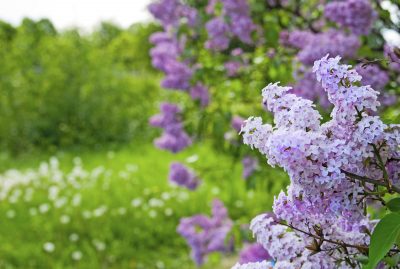






Many gardeners start planning the successive garden almost before the first leaf turns and certainly before the first frost. A walk through the garden, however, provides us with our most valuable clues as to the timing of various crops. Climate, weather and temperature triggers interact with the environment and impact the plant, animal and insect worlds – phenology. What is phenology and how can practicing phenology in gardens help us to correctly time planting and fertilizing? Let’s learn more.
Everything in nature is the result of phenology. Granted, human involvement and natural disasters can alter the natural order of phenology but, generally speaking, organisms, including human beings, rely on and act according to the predictable nature of seasonal changes.
Modern phenology began in 1736 with the observations of English naturalist Rober Marsham. His records of the connections between natural and seasonal occurrences began that year and spanned another 60 years. Some years later, a Belgian botanist, Charles Morren, gave the phenomenon its official name of phenology deriving from the Greek “phaino,” meaning to appear or to come into view, and “logo,” to study. Today, the phenology of plants is studied in many universities.
How can phenology of plants and other creatures help us in the garden? Read on to find out about penology garden info and how to incorporate its use in your landscape.
Gardeners generally like to be outside and, as such, are often keen observers of the cycles of nature. The activities of birds and insects let us know that spring has arrived even if the sun isn’t really shining and the forecast is for rain. Birds inherently know that it is time to build a nest. The early spring bulbs know that it is time to emerge, as do the overwintering insects.
Climatic changes, like global warming, have made phonological events occur earlier than usual causing changes in bird migrations and early flowering, hence, my early allergies. Spring is arriving earlier in the calendar year and fall is beginning later. Some species are more adaptable to these changes (humans) and others are affected more by them. This results in a dichotomy in nature. How organisms react to these changes makes phenology a barometer of climate change and its impact.
Observation of these naturally reoccurring cycles can help the gardener too. Farmers have long used phenology, even before they had a name for it, to pinpoint when to sow their crops and fertilize them. Today, the lifecycle of the lilac is commonly used as a guide to garden planning and planting. From leafing out to the progression of the blossoms from bud to fade, are clues to the phenology gardener. An example of this is the timing of certain crops. By observing lilacs, phenologist have decided that it is safe to plant tender crops like beans, cucumbers and squash when the lilac is in full bloom.
When using lilacs as a guide to gardening, be aware that phonological events progress from west to east and south to north. This is called ‘Hopkin’s Rule’ and means that these events are delayed 4 days per degree of north latitude and 1 ¼ days per day of east longitude. This isn’t a hard and fast rule, it’s meant to be a guideline only. Altitude and topography of your area may affect the natural events indicated by this rule.
Using lilac’s life cycle as a guide to planting times yields much more information than when to plant cukes, beans and squash. All of the following can be planted when the lilac is in first leaf and dandelions are in full bloom:
Early bulbs, such as daffodils, indicate planting time for peas. Late spring bulbs, like irises and daylilies, herald planting times for eggplant, melon, peppers, and tomatoes. Other blossoms signify planting times for other crops. For example, plant corn when the apple blossoms begin to fall or when the oak leaves are still small. Hardy crops can be planted when the plum and peach trees are in full bloom.
Phenology can also help pinpoint when to watch out and manage insect pests. For example:
Most events in nature are the result of timing. Phenology seeks to identify the clues that precipitate these events that affect the numbers, distribution and diversity of organisms, the ecosystem, food surplus or loss, and carbon and water cycles.
What Is A Root Zone: Information On The Root Zone Of Plants
What Is Commercial Landscaping – Information On Commercial Landscape Design
What Is Parthenocarpy: Information And Examples Of Parthenocarpy
Biennial Plant Information: What Does Biennial Mean
Dense Shade In Gardens: Exactly What Is Full Shade
What Is A Hard Frost: Information On Plants Affected By Hard Frost
What Is Light Frost: Information On The Effects Of Light Frost
Copyright © www.100flowers.win Botanic Garden All Rights Reserved